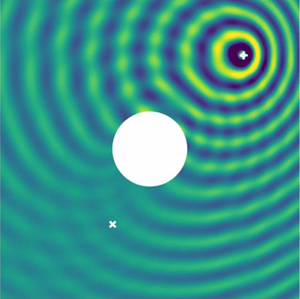Article contents
Direct and adjoint problems for sound propagation in non-uniform flows with lined and vibrating surfaces
Published online by Cambridge University Press: 06 December 2022
Abstract

This paper presents a systematic analysis of direct and adjoint problems for sound propagation with flow. Two scalar propagation operators are considered: the linearised potential equation from Goldstein, and Pierce's equation based on a high-frequency approximation. For both models, the analysis involves compressible base flows, volume sources and surfaces that can be vibrating and/or acoustically lined (using the Myers impedance condition), as well as far-field radiation boundaries. For both models, the direct problems are fully described and adjoint problems are formulated to define tailored Green's functions. These Green's functions are devised to provide an explicit link between the direct problem solutions and the source terms. These adjoint problems and tailored Green's functions are particularly useful and efficient for source localisation problems, or when stochastic distributed sources are involved. The present analysis yields a number of new results, including the adjoint Myers condition for the linearised potential equation, as well as the formulation of the direct and adjoint Myers condition for Pierce's equation. It is also shown how the adjoint problems can be recast in forms that are readily solved using existing simulation tools for the direct problems. Results presented in this paper are obtained using a high-order finite element method. Several test cases serve as validation for the approach using tailored Green's functions. They also illustrate the relative benefits of the two propagation operators.
JFM classification
- Type
- JFM Papers
- Information
- Copyright
- © The Author(s), 2022. Published by Cambridge University Press
References
REFERENCES
- 3
- Cited by



